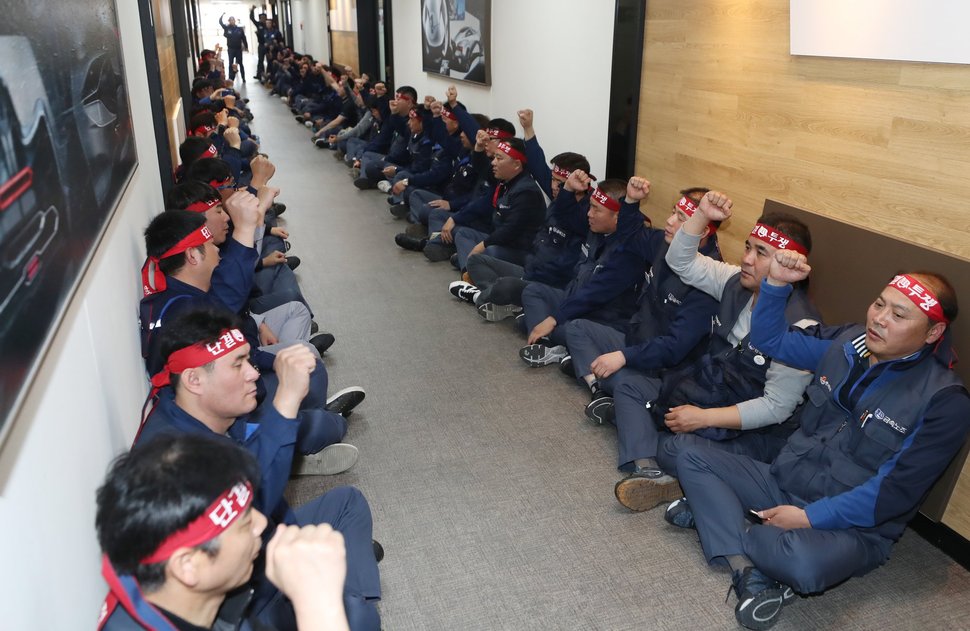Posted on : Oct.20,2018 16:11 KST
Modified on : Oct.20,2018 16:13 KST
 |
|
Members of GM Korea’s labor union rally outside a shareholders’ meeting at the automaker’s production facility in Bupyeong, Incheon, on Oct. 19
|
Amid opposition from its labor union and from the Korea Development Bank (KDB), its second largest shareholder, GM Korea pushed through a plan to establish a separate corporation in an extraordinary shareholders meeting on Oct. 19. This plan will create a R&D-focused corporation that combines a design center and a research institute.
Consequently, GM Korea will be split into two companies, one handling R&D and the other production. It’s truly regrettable that we’re facing another “dine and dash” controversy just five months after the South Korean government and the KDB agreed to a “business normalization” plan with the General Motors main office in the US.
GM Korea’s labor union sees this as “an attempt to reduce production after establishing a separate corporation and then to shut down or sell off the factories, only leaving behind the R&D corporation.” As a result, the union is planning to take firm action, such as launching a strike.
The KDB weighed in that “there were absolutely no deliberations about establishing a new R&D company” and plans to take legal action by filing a lawsuit to invalidate the decision made in the shareholders meeting.
On the other hand, GM Korea denies that it’s planning to withdraw from South Korea. It claims that the measure is designed to strengthen GM Korea’s competitiveness by concentrating the headquarters’ R&D work for its global product line at the new company. At the moment, there’s no way to accurately assess GM Korea’s true intentions. But if this decision is being made to strengthen competitiveness, the necessity of this baffling unilateral push is questionable.
The business normalization plan agreed to in May includes veto rights for the KDB, enabling the bank to veto any decision by GM Korea to transfer or sell 20 percent or more of its total assets. This safety mechanism was put in place to prevent GM Korea from pocketing government aid and then abruptly leaving the country. The problem is that a corporate spinoff isn’t listed among the transactions subject to the veto rights.
This is leading some to conclude that GM pulled the wool over the KDB’s eyes. The South Korean government and the KDB are likely to face criticism that they were too complacent in their negotiations with GM, which has engaged in “dine and dash” practices in other countries, including Australia.
Setting aside these technical issues, the GM headquarters’ “my way or the highway” approach clearly flies in the face of the agreement’s spirit. The primary reason the labor union accepted the shutdown of the Gunsan plant and the restructuring of the workforce and that the KDB agreed to provide US$750 million in public funds was to ensure stable employment. Considering that GM Korea’s main office bears the most responsibility for the company’s mismanagement, it really ought to respect the spirit of the agreement.
What GM Korea’s headquarters should do is put the corporate spinoff on hold until it can have a heart-to-heart discussion with the labor union and adequately discuss the matter with the KDB. If it refuses to do so, the South Korean government needs to look into taking some special measures of its own. Let’s be sure we don’t fall for any more of GM’s sneaky schemes.
Please direct comments or questions to [english@hani.co.kr]






